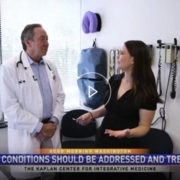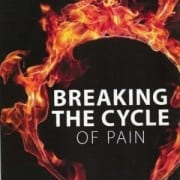Treating Chronic Pain
The number of patients diagnosed with chronic pain conditions continues to rise in the United States, topping 51 million in 2021. 1
Chronic pain is defined as pain that lasts for more than 3 months, a time frame that under normal circumstances should accommodate the body’s normal healing process. But when the body doesn’t respond how we expect it to, lives can quickly be interrupted, and for many, it can be life-shattering.
Chronic pain is treatable and there are many effective options available, so why are millions of people being left behind?
One of the biggest challenges in diagnosing and managing chronic pain is the fact that providers have to rely almost exclusively on the individual’s description of their pain and the disability it causes. Pain is subjective – there is no biomarker, blood test, or imaging study that can objectively detect the presence and severity of pain.
However, research that looks at the way our brains and nervous systems initiate and sustain severe chronic pain continues to point to the same conclusion – that chronic pain, in and of itself, is not the problem to be treated. Instead, chronic pain should be seen as a symptom of an underlying medical problem, and it is to this underlying problem that treatment must be targeted.
Specifically, chronic pain is a symptom of inflammation in the brain, or what I call “a brain on fire”. This inflammation is triggered by the body’s own immune system, which is designed to respond to any kind of assault. For example, physical injury, infections (such as Lyme disease or COVID-19), exposure to environmental toxins, concussions, celiac disease, loss of oxygen to the brain caused by sleep apnea, and even long-term emotional trauma, can set off an inflammatory response in the brain and central nervous system. Identifying the source(s) of inflammation is critical to breaking the cycle of chronic pain; and frequently, the sources are multiple, compounding, and cumulative.
To accurately diagnose and treat the causes of neuroinflammation that manifest as chronic pain, providers must:
- Take a comprehensive medical history of each individual.
- Work to correctly identify and treat the underlying root cause(s) of chronic pain.
- Educate people about their relationship with chronic pain. Like all relationships, how this is managed can make life substantially better or worse.
Pain Management Programs
Intensive pain management programs can be an extremely important tool in helping patients manage their pain and live a better life. They typically involve a treatment schedule that spans several weeks, during which time attendees are typically seen by a team of healthcare providers with a variety of specialties. Although programs vary somewhat from one to another, each is likely to include:
- Initial consultation with a provider who has pain management experience.
- Specialized lab tests.
- Nutritional intervention, including anti-inflammatory elimination diets and consultations with nutrition experts.
- Behavioral health techniques, such as meditation and relaxation therapies.
- Acupuncture.
- Movement therapies, such as yoga (especially restorative yoga and yogic philosophy training), and physical therapy, including core strengthening and biomechanics.
The goal of this type of intense programming with an emphasis on education is to help individuals think differently about their pain while providing them with new tools to manage their pain and re-engage in their lives. Additionally, if the programs are designed to approach pain as a symptom of an underlying medical condition and the treatment aims to resolve the root cause of the pain, there is a very good possibility that the pain will go away.
The Bottom Line
- Chronic pain is not a disease but a symptom.
- The way we treat pain now has, for the most part, been a costly, abysmal failure. Opioids are the most pressing issue but there are also serious concerns about the number of unsuccessful and unnecessary procedures (surgeries in particular) and the proliferation of the use of dorsal column stimulators (implanted electronic devices placed near the spinal cord to treat chronic pain), and the overutilization of spinal blocks (injections of anesthetic into the spine). The research evidence for these approaches for the treatment of chronic pain ranges from fair to poor. 2,3,4,5
- Behavioral health programs have some of the strongest data and the greatest success in treating chronic pain conditions. And, more importantly, when these programs are not successful, they don’t make the situation worse (unlike surgery and other invasive procedures).
What Needs to Happen
Individuals suffering from chronic pain must, in every single case, be offered a comprehensive workup with an individualized treatment approach.
We need to continue with research into the causes of inflammation in the brain, while also working on developing a treatment for brain inflammation that leads to chronic pain. We also need to develop testing that will provide us with an objective indicator of the chronic pain/underlying disease and its response to treatment.
In the interim, we should focus on improving the lives of our patients by using targeted therapies that address the biology of the pain, rather than its symptoms; anything short of this is like putting a Band-Aid on a bullet hole.
Sources:
1. Rikard SM, Strahan AE, Schmit KM, Guy GP Jr.. Chronic Pain Among Adults — United States, 2019–2021. MMWR Morb Mortal Wkly Rep 2023;72:379–385. DOI: http://dx.doi.org/10.15585/mmwr.mm7215a1.
2. PMID: 24308846
3. PMID: 25840040
4. PMID: 26824399
5. PMCID: PMC3777049
We are here for you, and we want to help.
Our goal is to return you to optimal health as soon as possible. To schedule an appointment please call: 703-532-4892 x2
This article was originally published in September 2016. It was reviewed and updated in September 2023.









Leave a Reply
Want to join the discussion?Feel free to contribute!